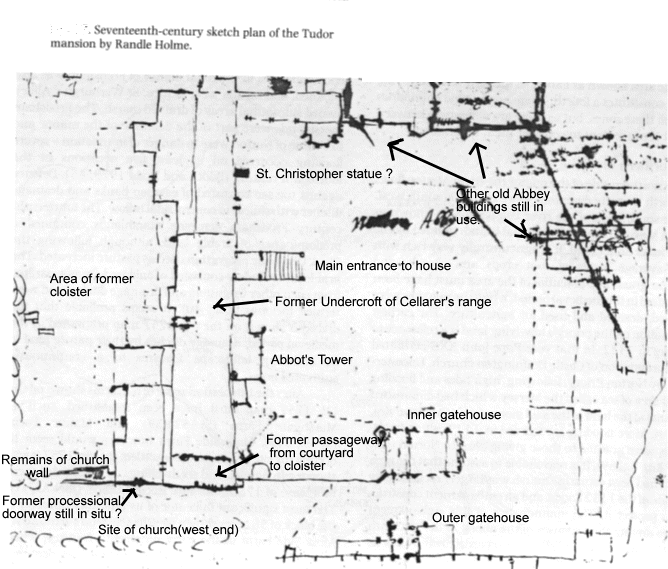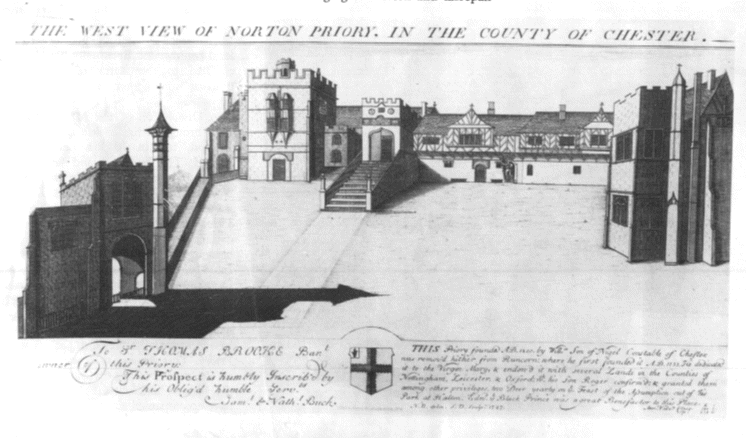The Tudor House at Norton Priory


A larger view of the two images can be seen by 'clicking' on them. Use the 'back' key on the menu bar to return to this page.
The Tudor House at Norton Priory |
|
 |
This sketch plan of "Norton Abbey" was done in the mid 17th.century by Randle Holme. It shows that many of the old Abbey buildings surrounding the courtyard were used by the Brooke family as the basis for their home. The church had largely gone, apart from a piece marked as "wall" in the lower left of the picture. There would appear to be two gatehouses to the courtyard. The line of the west cloister walk is still apparent, although by this time the cloister area itself was being used as a rubbish dump, as was found during the site excavations. Compare this with the Buck drawing (below) done in 1727 |
 |
This drawing by Samuel & Nathaniel Buck, done about 1727, mirrors very well the Randle Holme sketch ( above ). Some artist's licence was involved, because the shadows, as indicated, were wrong. From this drawing the belief was that the gatehouse stood on the south side of the courtyard, whereas the excavation proved that it lay on the north side, and the shadows shown could never have arisen. The front of the house faced west, and not east !. |
| This drawing confused the archaeologist
for a (short) time until it was realised what the artist
had done.The Abbot's tower is shown left centre, with the
two oriel windows. The main entrance was up the stairs to
the second floor. At the far left of the house can be
seen the door into the passageway which led from the
courtyard to the former cloister area. The church would
have stood to the left of this building, which is the
cellarer's range. To the right of the stairs is a door,
and then further to the right is the medieval statue of St.Christopher. All of
this house, with the exception of the ground floor of the
cellarer's range, disappeared in about 1750 when the
georgian House was erected on the site. A larger view of the two images can be seen by 'clicking' on them. Use the 'back' key on the menu bar to return to this page. |
|
| Return to Home page | |